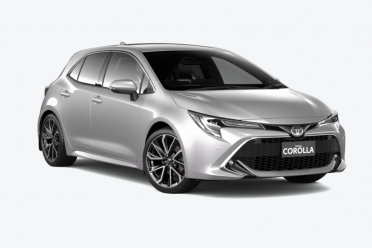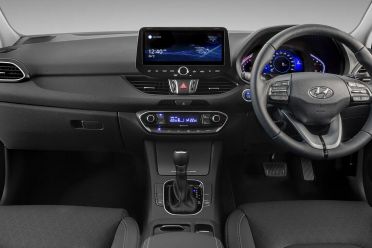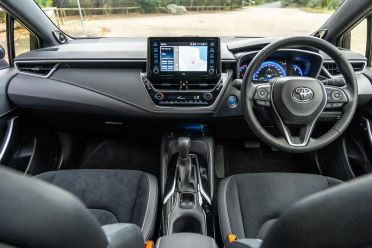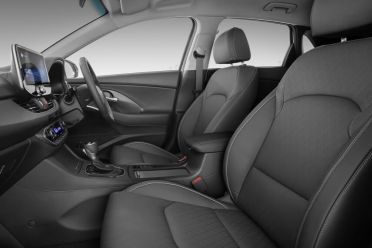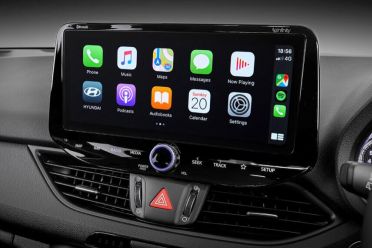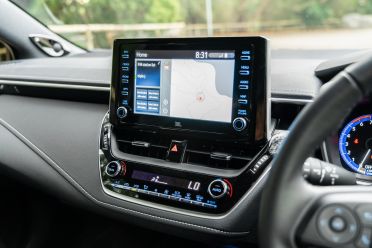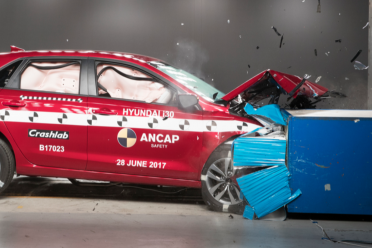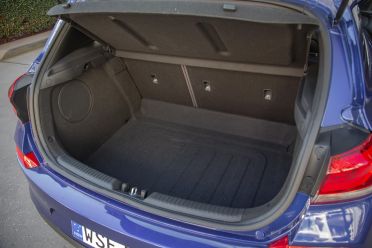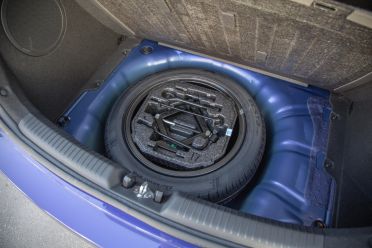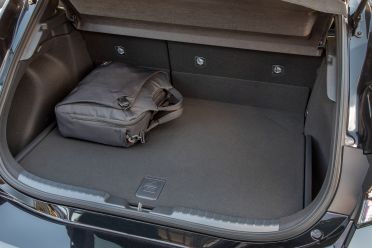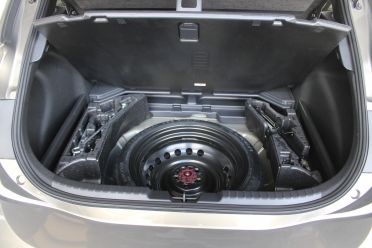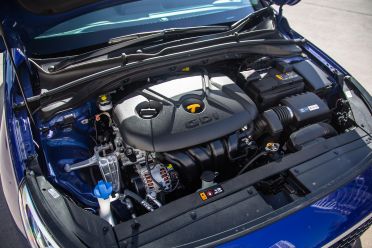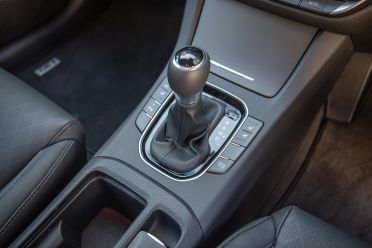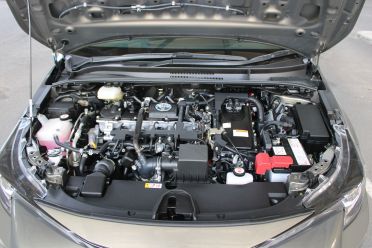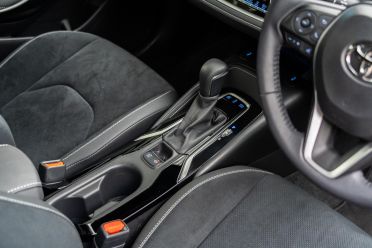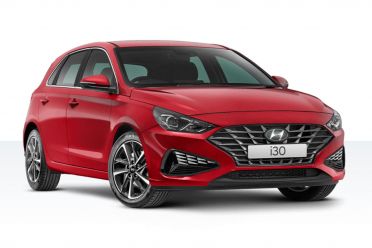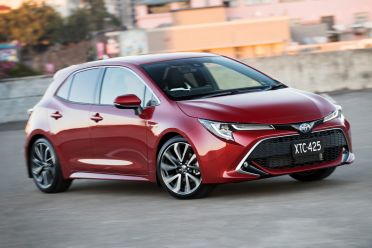The Toyota Corolla and Hyundai i30 are the two most popular hatchbacks on sale in Australia, although they face stiff competition from the Kia Cerato, Mazda 3, Volkswagen Golf, Honda Civic, Ford Focus and a quite a few others beyond this.
Hyundai this week happened to announce its 2021 i30 range, with tweaked design and more interior tech. We’re working to get behind the wheel soon, but in the meantime, how might you cross-shop this Korean contender with Japan’s Corolla?
I’ve chosen two grades that line up quite well here. This is purely a spec-based comparison, which will tide us over for now.
Pricing
The 2021 Hyundai i30 Elite is positioned as the luxuriously equipped variant. The similarly priced N-Line offers a more powerful engine but has fewer safety features and an inferior infotainment system with a smaller screen.
As such it comes up against the Toyota Corolla ZR with the standard petrol engine in terms of both expected engine performance and features for the money.
The Hyundai wears a list price of $30,220 before on-road costs, equating to an expected drive-away price (unless you wrangle a discount) of about $33,900, depending on which state/territory you’re in. The Corolla ZR is $32,695 list or about $36,900 drive-away.
So, the Hyundai will save you about three grand.
2021 Hyundai i30 hatch range
- i30 manual: $23,420
- i30: $25,420
- Active: $26,920
- Elite: $30,220
- N Line manual: $29,420
- N Line: $31,420
- N Line Premium manual: $34,220
- N Line Premium: $36,220
2021 Toyota Corolla hatch range
- Ascent Sport manual: $23,895
- Ascent Sport: $25,395
- Ascent Sport Hybrid: $27,395
- SX: $28,795
- SX Hybrid: $30,795
- ZR: $32,695
- ZR Hybrid: $34,695
Listed prices exclude on-road costs. Cars are automatic unless otherwise specified.
Features
Both cars share features such as a proximity key fob and button start, leather-trimmed seats, dual-zone climate control, satellite-navigation with live traffic updates, Apple CarPlay and Android Auto, digital radio, a reversing camera, and a wireless phone charger.
The Hyundai adds a full-sized spare wheel instead of a space-saver, and its swish new 10.25-inch widescreen has the Corolla’s measure.
But the Toyota counters as the only car here with a powered driver’s seat, seat heating for both front occupants, Bi-LED headlights, a head-up display projecting on the windscreen, and an extra speaker.
| Hyundai i30 Elite | Toyota Corolla ZR | |
|---|---|---|
| Wheels | 17-inch alloy | 18-inch alloy |
| Spare wheel | Full-size alloy | Space-saver |
| Headlights | Projector | Bi-LED |
| Proximity lock/unlock | Yes | Yes |
| Auto-folding side mirrors | Yes | Yes |
| Privacy glass | Yes | Yes |
| Seat trim | Leather | Leather and Ultrasuede |
| Seat functions | Manual adjustment | Powered driver’s seat Heated front seats |
| A/C system | Dual-zone climate control | Dual-zone climate control |
| Touchscreen | 10.25-inch | 8.0-inch |
| Satellite-navigation | Yes, with live updates | Yes, with live updates |
| Apple CarPlay & Android Auto | Yes | Yes |
| Digital radio | Yes | Yes |
| Sound system | 7 speakers, Infinity | 8 speakers, JBL |
| Head-up display | No | Yes |
| Wireless charging pad | Yes | Yes |
| Camera view | Reverse | Reverse |
| Trip computer readout | 7.0-inch TFT | 7.0-inch TFT |
Safety
Both cars have the maximum ANCAP crash rating of five stars, and offer a range of safety features including seven airbags (dual front, dual front-thorax, driver’s knee, full-length curtain), and forward autonomous emergency braking (AEB) controlled by camera and radar that can sense both pedestrians and cyclists in the right conditions.
Both cars come with lane-departure alert and active lane-keeping aids that steer the wheel before telling the driver to take over, blind-spot monitoring lights in the side mirror, rear cross-traffic alert, automatic high-beam headlights, and active cruise control.
The Toyota has road sign recognition that means it can keep you briefed on the speed limit, while the Hyundai counters with Safe Exit Assistant that chimes at you if you’re parked parallel, and are about to open your door into an oncoming cyclist or traffic.
| Hyundai i30 Elite | Toyota Corolla ZR | |
|---|---|---|
| Airbags | 7 | 7 |
| AEB urban & interurban | Yes (Forward collision Avoidance Assist) | Yes (Pre-Collision Safety System) |
| AEB – pedestrian | Yes | Yes |
| AEB – cyclist | Yes | Yes |
| Blind-spot monitor | Yes | Yes |
| Lane-departure alert | Yes | Yes |
| Active lane-keeping aid | Yes (Lane Keeping Assist) | Yes (Lane Trace Assist) |
| Rear cross-traffic alert | Yes | Yes |
| Road sign monitor | No | Yes (speed signs only) |
| Driver alertness monitor | Yes | No |
| High beam assistant | Yes | Yes |
| Safe exit assistant | Yes | No |
| Active cruise control | Yes | Yes |
Dimensions and space
As you can see, there’s very little different in dimensions. Both cars are about 4.4 metres long, 1.8m wide, and 1.5m tall.
A major difference is boot space – the Hyundai stores 395 litres with the back seats in use despite a full-size spare under the floor, while the Corolla’s boot is a tiny 217L – though the ZR hybrid model with its repair kit in lieu of a space-saver grows to a better 333L.
| Hyundai i30 Elite | Toyota Corolla ZR | |
|---|---|---|
| Length | 4340mm | 4375mm |
| Width | 1795mm | 1790mm |
| Height | 1455mm | 1435mm |
| Wheelbase | 2650mm | 2640mm |
| Weight | 1382kg | 1420kg |
| Boot capacity | 395L | 217L |
Performance
Both cars use no-nonsense 2.0-litre naturally-aspirated four-cylinder petrol engines with direct injection. The Hyundai’s makes 120kW/203Nm and the Toyota’s 125kW/200Nm, giving them very similar power-to-weight ratios a smidge under 90kW per tonne.
The Hyundai uses a six-speed torque converter while the Toyota uses a CVT with a direct-shift mechanism for first gear and 10 artificial stepped ratios programmed in to give it a more conventional feel.
Fuel consumption is interesting, with the Toyota greatly undercutting the Hyundai 6.0L/100km versus 7.4L/100km. The newer engine design and fuel-saving transmission clearly do their bit. Both cars run on basic 91 RON petrol and have 50L tanks.
The two brands take a divergent approach to alternative drivetrains.
Hyundai’s 150kW 1.6-litre turbo and dual-clutch auto combination in the N Line and N Line Premium give warm-hatch performance, while Toyota’s 1.8-litre petrol-electric hybrid drivetrain across all grades slashes fuel use by at least a third, to 4.2L/100km.
| Hyundai i30 Elite | Toyota Corolla ZR | |
|---|---|---|
| Displacement | 2.0-litre | 2.0-litre |
| Induction | Naturally aspirated | Naturally aspirated |
| Peak power | 120kW | 125kW |
| Peak torque | 203Nm | 200Nm |
| Transmission | 6-speed auto | CVT (10 stepped ratios) |
| Fuel economy | 7.4L/100km | 6.0L/100km |
| Fuel type needed | 91 RON | 91 RON |
| Fuel tank | 50L | 50L |
| Towing capacity | 1300kg | 1300kg |
| Power-to-weight | 87.1kW/t | 89.9kW/t |
Dynamics
The Hyundai has Australian-specific suspension, whereby its Sydney engineering team test and specify particular dampers, bushes and stabiliser bars. The layout comprises struts at the front and a torsion beam at the rear. N Line models have a multi-link rear.
Toyota has made a real effort to boost the Corolla’s handling in this generation, as the trailing wishbone independent rear suspension demonstrates. The downside is packaging and cost trade-offs.
Both cars use electric motor-driven power steering.
| Hyundai i30 Elite | Toyota Corolla ZR | |
|---|---|---|
| Front suspension | MacPherson strut | MacPherson strut |
| Rear suspension | Torsion beam | Trailing wishbone |
| Front brakes | Ventilated disc | Ventilated disc |
| Rear brakes | Solid disc | Solid disc |
| Steering system | Electric-assist | Electric-assist |
| Turning circle | 10.6m | 11.4m |
Running costs
Both Hyundai and Toyota offer five-year, unlimited-kilometre warranties. Both the i30 and Corolla also have servicing intervals of 12 months or 15,000km.
Four services for the Toyota are $720 at present rates ($180 a visit). Four services for the Hyundai should cost $1136 ($259, $259, $259, and $359). You can pay upfront too.
If both cars match their fuel claims – and these figures are hugely contingent on driving style, load, and traffic conditions – the Corolla will use 140L less fuel every 10,000km, which you might expect to add up quickly even if fuel prices stay low.
Cheaper options
Hyundai i30 base ($25,420) v Corolla Ascent Sport ($25,395) shared features
- 16-inch alloy wheels
- Full-size spare (Corolla hybrid excluded)
- LED daytime running lights
- Fabric seats
- Manual air-conditioning
- 8.0-inch centre touchscreen
- Apple CarPlay
- Android Auto
- Reversing camera
- Bluetooth and USB connections
- Front, front-side and curtain airbags
- AEB system – cars, pedestrians and cyclists
- Driver attention monitor
- Lane-keeping assist
- Active cruise control (not on manual i30)
Unique to the Hyundai
- Leather ’appointed’ steering wheel
Unique to the Toyota
- LED headlights
- Road sign assist
- Proximity key and button start (hybrid only)
- Climate control (hybrid only)
Hyundai i30 Active ($26,920) v Corolla Ascent Sport ($28,795)
Added to the Hyundai over base
- Leather ‘appointed’ seats
- 17-inch alloy wheels
Added to the Toyota over Ascent Sport
- Proximity key and button start (2.0 petrol only)
- Paddle shifters (2.0 petrol only)
- Satellite-navigation
- Digital radio
- Wireless phone charger
- Rear cross-traffic alert
- Blind-spot monitor





